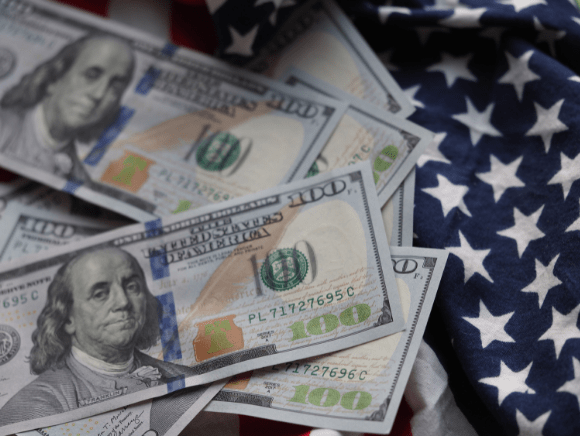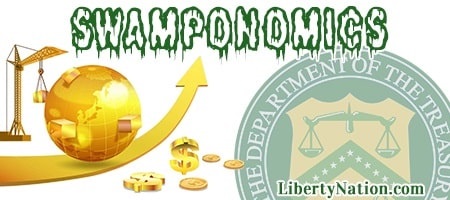
Before the latest developments in the current US recession are unveiled, let’s take a look at exactly what happened in the second quarter, according to the much-anticipated July 28 gross domestic product (GDP) report from the Bureau of Economic Analysis (BEA).
Inventory investment tumbled, caused by a decline in retail trade, driven by general merchandise stores and motor vehicle dealers. Housing investment dropped amid a decrease in brokers’ commissions. Federal government spending fell due to a drop in non-defense spending that was offset by an increase in defense spending. State and local government outlays slipped due to a decrease in investments in structures. Business investment, also known as capital expenditures (CapEx), slid in the April-June period. In addition, the BEA data highlighted that real disposable personal income, adjusted for taxes and inflation, dipped by 0.5%. The personal savings rate collapsed to multi-year lows.
 On the other side of the report, imports surged and exports exploded, thanks to services, industrial supplies, and materials. Although its growth slowed, there was an increase in consumer spending.
On the other side of the report, imports surged and exports exploded, thanks to services, industrial supplies, and materials. Although its growth slowed, there was an increase in consumer spending.
Put simply, after a 1.6% contraction in the first quarter and a 0.9% slump in the second quarter, the US economy meets the definition of a technical recession. Of course, all this could change as the BEA will release two more GDP estimates, which could be revised up or down. The next talking points should be fascinating from both sides of the political aisle.
Experts Reject US Recession Talk
It is hard to locate any other time in modern US history where the expert class did not define a recession as two consecutive quarters of negative growth. Over the last 20 years, the nation’s esteemed leaders would declare a recession, from former President Bill Clinton to House Speaker Nancy Pelosi to National Economic Council (NEC) director Brian Deese. Many of these same individuals are not as quick to shout the “R” word today. The statist economists – the ones who should know better – are also apprehensive about uttering this dreadful term, telling the American people not to believe their eyes and ears.
Ben White, the chief economic correspondent at Politico, was called out by Tucker Carlson for previously noting that two straight quarters of negative GDP signaled recession. His response? “Should have known better at the time, but it had been a while since I’d studied recession criteria and that’s not it. Nothing to do with giving Biden any kind of break. Just accurate now.”
Economist Paul Krugman, who would be the first to warn of a recession or depression if a Republican were president, has been on a Twitter tirade against anyone who dares question his wisdom, writing on the social media platform, “Forget the stupid 2-quarter recession stuff.” He added:
“The backlash against saying ‘2 negative quarters isn’t the definition of a recession’ – a simple statement of fact – is the worst I’ve seen. And I’ve seen a lot.
“The previous peak was back in the Bush years, against anyone saying we were being deceived into war. This is worse. I suspect that the fact that this isn’t truly debatable makes it worse. People who thought they had a perfect gotcha end up feeling humiliated and get even angrier.”
Of course, this has nothing to do with statistics and the state of this weird economy. It has more to do with who is sitting in the Oval Office. This was spotlighted by entrepreneur David Sacks, who tweeted: “A lot of people are wondering about the definition of recession. A recession is defined as two consecutive quarters of negative GDP growth if a Republican is president. The definition is far more complicated and unknowable if a Democrat is president.”
 Indeed, when the White House recently published a blog post and suggested that the recession definition needs an update, the mainstream media acquiesced to the administration’s demands. Sad! But what happens if the second half of 2022 shows the same putrid economic data? Putin’s recession, anyone? The panoply of excuses will be awe-inspiring.
Indeed, when the White House recently published a blog post and suggested that the recession definition needs an update, the mainstream media acquiesced to the administration’s demands. Sad! But what happens if the second half of 2022 shows the same putrid economic data? Putin’s recession, anyone? The panoply of excuses will be awe-inspiring.
But you cannot fool the American people as they know a recession has arrived. A new Liberty Nation poll revealed that 91% of respondents think the US is officially in a recession.
How About the Third Quarter?
The first month of the third quarter is in the history books, and some early data suggest conditions are not improving. But somehow, the smartest men and women in the establishment will spin it to suit the agenda they are pushing.
Initial jobless claims continued their upward trajectory and climbed to their highest levels since November 2021. The Dallas Fed Manufacturing Index weakened to -22.6, the Conference Board’s Consumer Confidence Index (CCI) fell to 95.7, the Richmond Fed Manufacturing Index was unchanged at zero, mortgage applications plummeted, and the Chicago purchasing managers’ index (PMI) eased to 52.1. The University of Michigan’s Consumer Sentiment Index rose to 51.5 in July, but this was offset by another drop in consumer expectations.
2020 vs. 2022
In October 2020, Joe Biden informed the American people that he “helped pull this country out of a recession before – and, as president, I’ll do it again.” But, as the young whippersnappers would say, this tweet did not age well. Not only is the US in a technical recession, but many Wall Street investment firms and economists have also lowered their outlooks for the third and fourth quarters, as well as for 2023 and 2024. So, the adults are back in charge, and all the country got by sending them to the Swamp was 40-year high inflation, shortages, more debt, and an economic downturn. Ain’t life grand?
Remember to check out the web’s best conservative news aggregator
Whatfinger.com — the #1 Alternative to the Drudge


